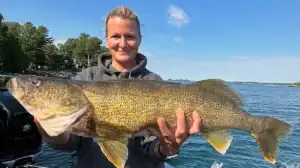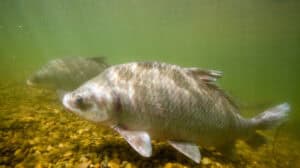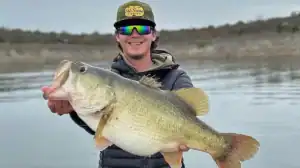White bass is one of the most sought-after species for anglers looking for an exciting fishing experience. Known for their aggressive feeding behavior and spirited fight, these fish are not only a blast to catch, but also a great addition to your table. However, understanding where and when to target these fish is the key to success. This detailed overview of white bass fishing, including the best locations to find them, the ideal times to fish, and effective techniques to employ, will hopefully help you get there.
Whether you’re a seasoned angler or just starting out, knowing the habits and habitats of white bass is crucial. Growing up in east Tennessee, I’ve been surrounded by fisheries with abundant numbers of these fish. This allowed me the opportunity to target this species using a number of different techniques and they’ve quickly become one of my favorite species to fish for, especially when fishing with beginners.

What Are White Bass?
White bass, aka silver bass, or sand bass are a species of freshwater fish native to North America that are best known for their silver-white coloration and distinctive horizontal black stripes. They typically inhabit rivers, lakes, and reservoirs, often forming schools that make them easier to locate and catch.
They are a predatory species known for their aggressive feeding behavior, particularly during the spring spawning season when they move into shallow waters. They primarily feed on small fish, such as shad and minnows, as well as insects.
Fully grown white bass are usually around 12 to 15 inches long, but they can grow up to 17 inches.
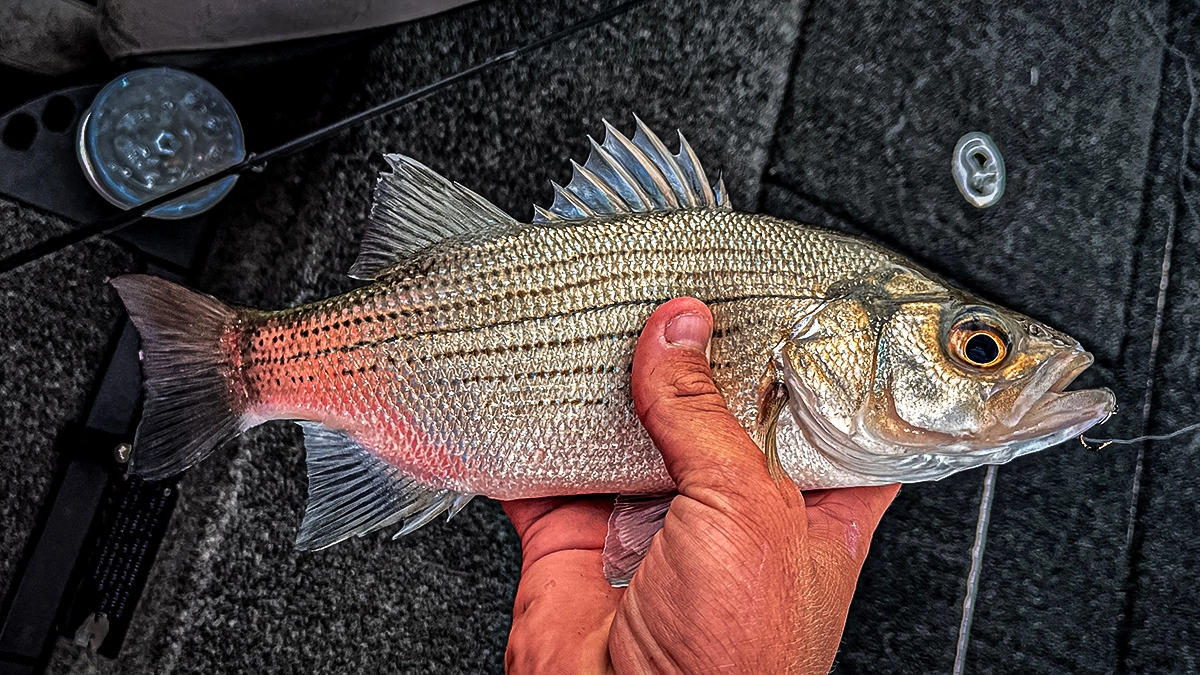
Where To Find White Bass
White bass are commonly found in rivers, streams, and lakes throughout the country. If you’re fishing a stream, look for them in shallow areas near riffles or eddies. In lakes and reservoirs, white bass are found around submerged structures like rock piles, brush, and points, particularly in warmer months. Shallow flats can also be a high percentage location, especially during early morning or late evening when fish move shallow to feed.
Additionally, focus on main lake points and drop-offs where they can ambush prey. Since white bass are social fish, they often school together, so watch for surface activity, like birds feeding on baitfish. Windy areas can also be advantageous, as wind pushes baitfish into certain spots, typically attracting white bass.

Don’t forget about seasonal hot spots: in spring, target spawning areas; in summer, look for deeper water; and in fall, be aware that white bass often move back into shallower waters to feed before winter.
Understanding these habitats and behaviors will significantly increase your chances of successfully locating white bass in your local waters.
Using Your Electronics
Using your electronics is arguably the most effective way to find and catch these fish. While I have caught a number of white bass off the bank on lures like crankbaits and rooster tails, I grew up targeting these fish using electronics.
Technologies such as side-imaging, down-imaging, and forward-facing sonar will all be helpful in your quest for white bass. This species is fairly abundant, and you’ll see both singles and schools of fish traveling through the water column. Given their aggressive and abundant nature, I primarily focus on schools of fish.

As mentioned earlier, groups of white bass typically relate to some sort of structure, and they are fairly recognizable on your electronics. They travel in tight groups of anywhere between 30 and 300 fish.
They are larger than your average gizzard shad, but they look similar when schooled together. Watching how they react to your lure is a great way to quickly reveal their identity. These fish almost always respond to a bait, and it typically comes across as a fast darting motion or streak on your electronics.
How To Catch White Bass
There are a number of effective tactics for catching white bass, and it changes depending on seasonality and your current weather conditions.
Two techniques that always seem to work are shallow power fishing and deep vertical fishing. I primarily stick with shallow power fishing throughout the spring and fall — that’s when white bass push shallow to spawn and feed, and covering water with a topwater or shallow reaction bait is a great way to catch tons of white bass.
In the summer and winter, I primarily focus on deep schools and I typically rely on my electronics to do it, but you can still get it done without the tech.
Hovering lures like a jigging spoon or jig and minnow above these bass is a great way to get them to react. I primarily focus my search in 15 to 30 feet of water, but I’ve seen fish as deep as 50 feet at this time of year.
Lure Selection
I’ve been fishing for white bass ever since I was a small child. I grew up catching them from the bank, but eventually I began targeting them from a bass boat. Similarly, I only used a handful of lures back in the day, but slowly added a variety lure options to my white bass arsenal.
Among my favorites today are the War Eagle jigging spoon, the Bass Pro Shops XPS Micro Spin, and the Bobby Garland crappie jig with a soft plastic grub.
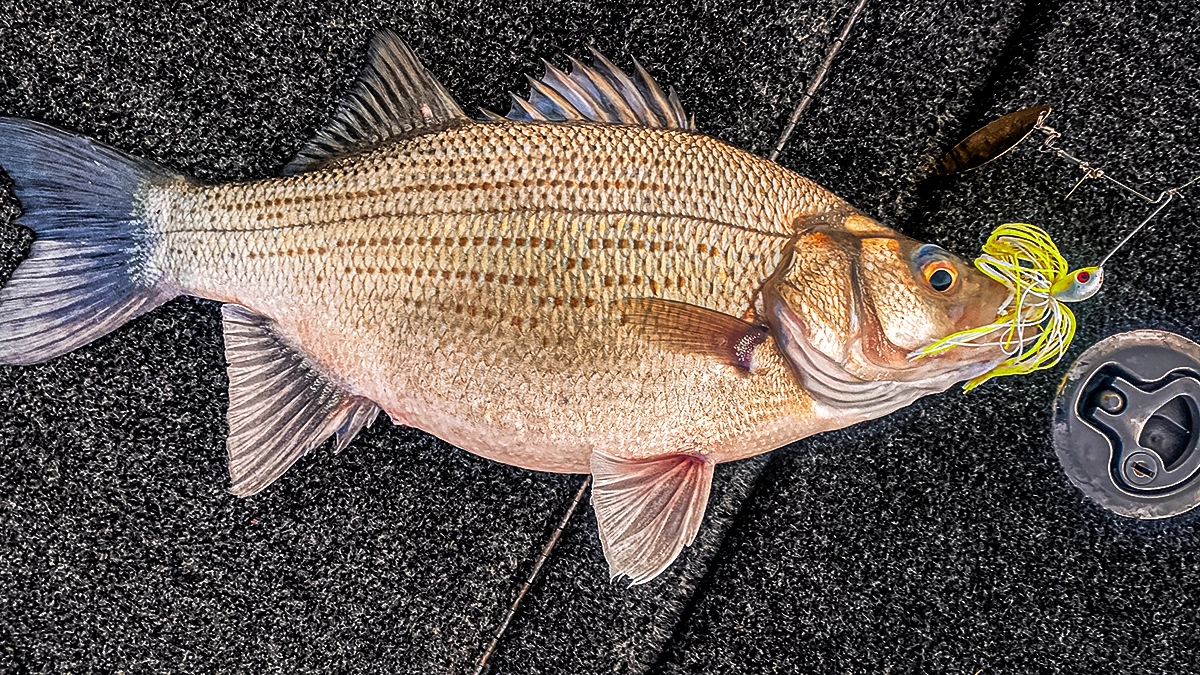
All three of these lures are perfect for fishing from the bank or a boat, and they’re all proven methods for catching loads of white bass.
The War Eagle Jigging Spoon is perfect whenever you’re targeting deep schools of fish located around points or humps. I use the Bass Pro Shops XPS Micro Spin whenever I’m targeting fish close to the surface. It’s easy to fish — just cast it out and retrieve — and it’s super effective for catching white bass.
Last, but certainly not least, The Bobby Garland crappie jig is perfect for floating around brush and other types of cover. This is my go-to bait whenever I’m targeting brush piles and other types of cover that these fish love.
All in all, white bass fishing is a fun and easy way to load the boat with hard fighting fish. I love to target nearly any species of fish, but this species will always have a special place in my heart. It was among the first species I ever caught in my life, and I can attest that this species is great for getting people into the sport.


